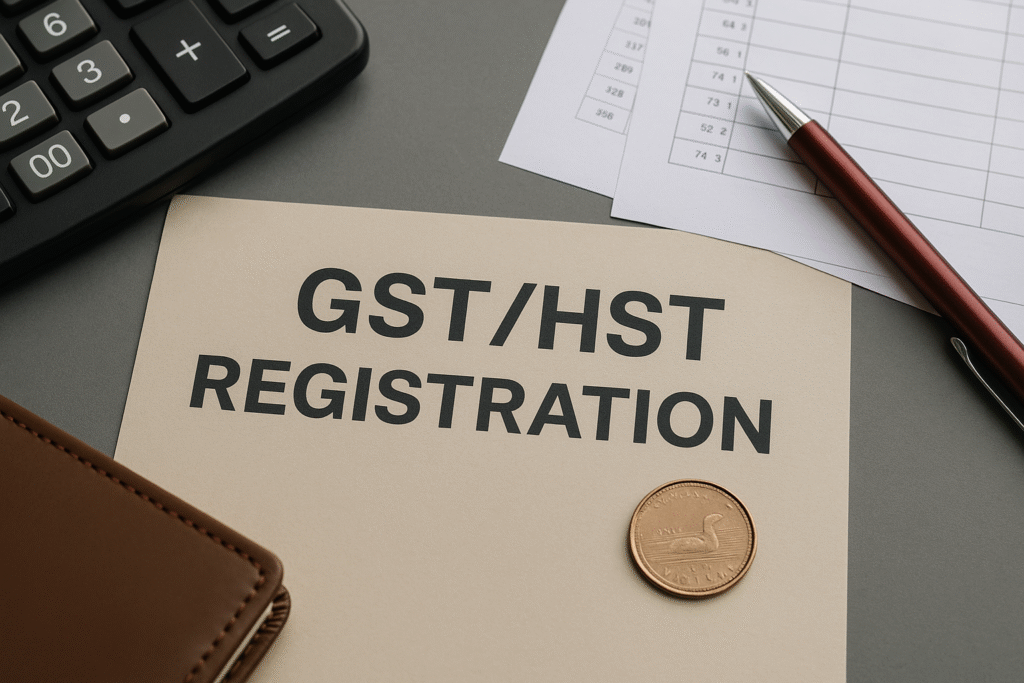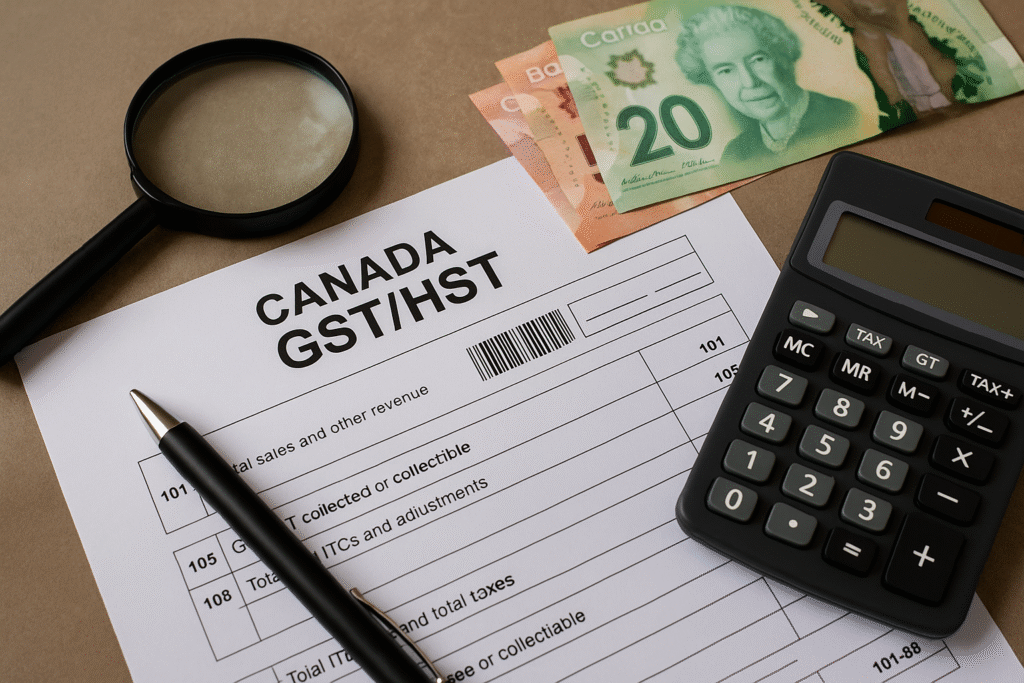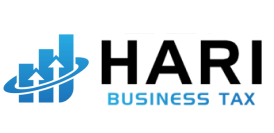GST/HST Registration for New Canadian Businesses
If you are starting a new Canadian business, understanding what you need to know about GST/HST registration is key to managing federal and provincial rates correctly and avoiding costly penalties. Gondaliya CPA explains how the $30,000 threshold affects your need to register to collect GST/HST and the importance of tracking business driving to meet CRA GST HST registration requirements for small businesses and the self-employed.
Request a Free Consultation
What is GST/HST? A Beginner’s Guide for New Businesses
GST and HST are big parts of Canada’s sales tax system. If you’re starting a business here, you gotta know how they work. They affect how you charge customers and when you need to register your business for taxes.

GST stands for Goods and Services Tax. It’s a federal tax that applies across Canada. HST, or Harmonized Sales Tax, mixes this federal GST with some provinces’ sales taxes. So instead of paying two separate taxes, people pay one combined tax in those places.
If you run a business, you have to register for GST or HST through the Canada Revenue Agency (CRA). CRA is the government agency that handles registrations, collects taxes, and makes sure everyone follows the rules.
Definition of GST/HST
GST means Goods and Services Tax. It’s charged on most goods and services sold in Canada. HST joins the federal GST with provincial sales taxes in certain provinces so businesses collect one tax instead of two.
The Canada Revenue Agency (CRA) looks after everything to do with GST and HST. You must do your CRA GST HST registration if your business needs to collect these taxes.
Difference between GST and HST
Both are sales taxes but they work differently:
- GST is a federal sales tax at 5%. It applies everywhere in Canada.
- HST is a mix of the 5% federal tax plus extra provincial tax that changes by province.
For example:
- Ontario charges 13% HST (5% federal + 8% provincial).
- British Columbia only charges 5% GST since they don’t use HST.
Knowing this helps you figure out how much tax to add based on where your customer lives.
Federal and Provincial Rates
Here are some rates right now:
| Province/Territory | Total Rate | Breakdown |
|---|---|---|
| Alberta | 5% | Federal only |
| Ontario | 13% | 5% Federal + 8% Provincial |
| Nova Scotia | 15% | 5% Federal +10% Provincial |
| Quebec | 14.975% | Includes QST |
Rates can change, so check CRA for the latest info before you set prices or file your returns.
The $30,000 Threshold: When GST/HST Registration Becomes Mandatory
If your business earns more than $30,000 over four straight quarters from taxable supplies — that means stuff you sell that includes GST or HST — then you must register for these taxes. This $30,000 mark is called the small supplier threshold.
If you earn less than this, registration is optional. But sometimes it helps because then you can claim input tax credits on what you buy for your business.
So keep an eye on your sales numbers. If they cross $30,000 in taxable supplies, get registered with CRA to avoid trouble later.
Understanding these basics about GST/HST will help your new business follow Canadian rules without headaches. Gondaliya CPA helps businesses with their registrations and tax filing so they don’t miss deadlines or pay fines.
GST/HST Registration Process
Registering to Collect GST/HST Through the CRA: A Step-by-Step Guide
If your business makes more than $30,000 in taxable sales over a calendar quarter or four quarters in Canada, you need to register for GST/HST. This is the tax registration process Canada businesses must follow. Registering helps you stay on the right side of the law and avoid fines.
Here’s how to register for GST/HST with the CRA:
- Check if your business hits the $30,000 sales mark or if you want to register voluntarily.
- Collect your business info like your legal name, address, and type of business.
- Pick how you want to register: online, phone, or mail.
- Fill out the application with all needed details.
- Wait for CRA to send you a Business Number (BN) with a GST/HST account.
This sales tax registration Canada step applies if you run a sole proprietorship or a corporation.
Online Registration
The quickest way to register is through CRA online services using Business Registration Online (BRO). It’s an easy process that gives instant confirmation once done.
- Go to the CRA Business Registration Online.
- Enter your business info like structure and contact details.
- Submit the form electronically.
- Get your BN and GST/HST account number right away.
Registering online saves time and cuts down mistakes.
Phone Registration
You can also register by phone by calling the CRA’s Business Enquiries line at 1-800-959-5525 (inside Canada).
Here’s what happens:
- Call during business hours.
- Give them your ID and business info.
- Hear back a verbal confirmation.
- Receive official documents in the mail a few days later.
Phone registration works well if you want to talk with someone but may take longer than online.
Mail Registration
Some folks prefer paper forms. You can set up your tax account by mailing your application to CRA.
- Download Form RC1 – Request for a Business Number from CRA’s website.
- Fill out every section carefully.
- Mail it to the tax centre shown on the form instructions.
- Wait weeks for CRA to process and send your BN documents by mail.
Mail takes longer but is handy if internet access is tough or you need extra help.
Obtaining Your Business Number (BN) Before GST/HST Registration
You need a CRA Business Number (BN) before registering for GST HST registration. The BN is your ID for federal programs like payroll, import/export, and taxes such as GST/HST.
Here are some facts about BN:
- It groups all your federal accounts under one number.
- You get it automatically when registering online or by phone for any program including sales tax accounts.
If you just want a BN without signing up for other programs right now:
- Apply through BRO online,
- Or call CRA,
- Or send Form RC1 by mail,
Once you have your BN, use it when doing your sales tax registration Canada paperwork.
Gondaliya CPA helps new Canadian businesses go through this process easily—from getting their BNs fast to filing their first returns right—helping avoid problems with late or wrong registrations when they “register gst with cra.”
GST/HST Voluntary Registrations: When It Makes Sense for Your Business
You can register for GST HST even if your business doesn’t hit the $30,000 small supplier limit. This is called voluntary GST registration. Some businesses pick this to get input tax credits or to look more professional. The federal GST rate is 5%. But HST combines GST and provincial sales tax in some provinces, so rates go from 13% to 15%.
Small business GST rules say you must register once your revenue goes over $30,000 in four quarters. But if you’re a startup or still growing, voluntary registration helps you get taxes back on what you buy.
For example, a new consulting firm in Ontario might register early, even before they make $30,000 a year. They can then use input tax credits to lower costs and show clients they’re legit.
Benefits of Voluntary Registration
Voluntary registration brings these perks:
- Input Tax Credits: You get money back on the GST/HST you pay for things your business needs.
- Tax Deductions: This means you pay less overall and keep more cash on hand.
- Business Tax Planning: It makes it easier to follow rules later if your business grows big.
- Accounting Software Compatibility: Many tools help track your GST automatically when you’re registered.
These help you handle Canadian small business tax stuff better and plan money matters more easily.
Considerations for Voluntary Registration
Before signing up, think about these things:
- Once registered, you have to charge and send GST/HST on all sales—even if your income is below $30,000.
- You need to file returns properly and on time to avoid fines.
- Know the deadlines and keep good records.
- Check if the benefit of getting input tax credits is worth the work of filing taxes regularly.
Gondaliya CPA helps new businesses with these steps. We guide you through CRA GST HST registration right so you don’t get penalties and can keep taxes under control.
How GST/HST Works for Small Businesses and the Self-Employed
If you run a small business or work for yourself in Canada, you need to understand how GST HST registration works. The Canada Revenue Agency (CRA) wants you to register for GST/HST if your sales go over $30,000 in four straight calendar quarters. After that, you have to charge GST or HST on most things you sell.
Charging GST/HST
You charge either federal GST or provincial HST depending on where your business is:
- The federal GST rate is 5% across Canada.
- Some provinces use HST, which combines federal and provincial sales tax. For example:
- Ontario charges 13%
- Nova Scotia charges 15%
Check if your province uses just GST or if it has HST. You must charge the right tax based on where your customer lives.
Collecting GST/HST
Once you register, you must collect taxes from customers on taxable supplies. Taxable supplies are goods and services that CRA says are taxed. Keep good records of this money because it’s not yours—it belongs to the government.
You can also get back some tax paid on business expenses. This is called input tax credits (ITCs). Claiming ITCs lowers the amount you owe when you send money to CRA.
Remitting GST/HST
After collecting taxes, send them to CRA regularly. They tell you when:
- Monthly
- Quarterly
- Or once a year (usually for smaller businesses)
Send payments on time to avoid penalties and interest. When filing, report what you collected minus any ITCs.
Essential Record-Keeping for GST/HST Compliance
Good record keeping helps keep your business on track with CRA rules. Make sure to organize:
- Sales invoices that show how much GST/HST you charged
- Receipts for purchases where you claimed input tax credits
- Bank statements that show deposits of collected taxes
- Copies of filed returns and payment proof
Clear records help with filling out returns right and prove things if CRA checks your business. Keeping track protects you from costly mistakes or fines about Canadian small business tax rules.
Gondaliya CPA helps new Canadian businesses handle everything—from signing up for CRA GST HST to filing correctly—so they avoid errors and stay within all small business tax rules in Canada.
Avoiding GST/HST Penalties
Common GST/HST Filing Mistakes and How to Avoid Them
Many businesses mess up their GST HST filing. Late filing, wrong reporting, or missing info cause trouble. CRA can charge penalties or interest if you slip up.
Here’s how to stay clear:
- Mark your calendar for all tax return submission dates.
- Keep your records neat and organized.
- Show GST/HST amounts clearly on invoices.
- Check everything before sending your return.
These simple steps help you file on time and right. That cuts down the chance of paying extra fines.
Late Filing
Filing late is a big reason people get hit with penalties. CRA sets tax remittance deadlines based on your reporting cycle—monthly, quarterly, or yearly. Miss a deadline, and you get a fine.
- The penalty starts at 1% of what you owe.
- Then, add 0.25% more for every full month you are late. This can go up to 12 months max.
- Plus, interest piles up on unpaid amounts until you pay it all.
To avoid late filing:
- Set reminders ahead of deadlines.
- Use software that tells you when to file.
- Ask a pro if handling many accounts gets tricky.
Incorrect Reporting
Incorrect reporting means your GST HST return data doesn’t match your real sales or purchases. Maybe you report too much input tax credit or too little taxable sales.
This can make CRA audit you and reassess your taxes. You might owe more money plus get fined for carelessness or worse.
Stop wrong reporting by:
- Keeping detailed sales records with clear invoice breakdowns.
- Checking your books regularly with bank statements.
- Getting expert advice if unsure what counts as taxable supplies or input credits.
Missing Information
Missing information means leaving parts blank on your GST HST return form. For example: no business number, wrong contact details, or forgetting transaction amounts.
CRA may reject such returns. That causes delays and can lead to penalties for late payments during this time.
Avoid missing info by:
- Reviewing each part carefully before submitting.
- Using checklists from the CRA website.
Understanding GST/HST Penalties and Interest Charges
Penalties happen mainly because of late filing, wrong returns, or not paying taxes on time. CRA adds interest daily on any overdue amounts. Rates change every few months based on market trends.
Here are common penalty types:
| Penalty Type | Description |
|---|---|
| Late-Filing Penalty | Charged when you miss your tax payment deadline |
| Repeated Failure | Bigger fines if you keep missing deadlines |
| Gross Negligence | Heavy fines if false info was given on purpose |
Interest grows over time and makes your debt bigger if not fixed soon.
Knowing these rules helps businesses stay out of trouble and avoid big bills from CRA.
Gondaliya CPA helps Canadian businesses with proper registration and managing GST/HST filings so they meet deadlines right and dodge penalties from the CRA.
Gondaliya CPA: Your GST/HST Partner
Starting a business in Canada? You’ll face many tax rules, especially about GST/HST registration. Gondaliya CPA offers tax consultation for startups to make this easier. We act as financial advisors and provide accounting services. Our team helps you register your business taxes the right way.
We know small businesses struggle with these rules. So, we give clear advice just for you. Our tax consult services help you avoid confusion and keep you compliant from the start. Need help setting up accounts or filing taxes? We have the experience to back you up.
Gondaliya CPA: GST/HST Registration and Filing Services
Registering for GST/HST can be tricky without help. We guide you through CRA GST HST registration carefully and on time. Here’s what we do:

- Register your business for GST/HST with the Canada Revenue Agency
- Apply for your GST number application
- Set up your tax account properly
- Handle all business tax registration across Canada
Choosing us lowers mistakes that cause delays or audits. We make sure your registration meets federal rules and consider any provincial rate changes where needed.
Let Gondaliya CPA Help You Manage Your GST/HST Compliance and Avoid Costly Penalties
Following GST HST compliance rules matters a lot to stop penalties from hitting your wallet. Many new businesses miss deadlines or mess up reports. This can lead to big fines or audit risks.
Gondaliya CPA stays on top of your records and helps file on time. We track rule changes so you don’t have to worry much. Our team stops common mistakes like late payments or wrong calculations that bring penalties.
We handle:
- Filing returns on time
- Calculating amounts accurately
- Keeping records as CRA wants them
This cuts stress when audits happen and keeps surprise charges away from bad compliance.
Contact Gondaliya CPA for Expert Advice on GST/HST
Starting a small business in Canada? Getting expert help makes tax stuff easier right from the start. Reach out to Gondaliya CPA today for tax professional assistance that focuses on helping new businesses grow strong.
Our small business support services cover everything—from first talks to full accounting work that fits startup needs involving GST HST registration and more.
Get in touch now—make sure your registrations are correct, follow rules with ease, and build your business with confidence thanks to our help every step of the way.
FAQs on GST/HST Registration and Related Tax Topics for New Canadian Businesses
What are taxable sales for GST/HST registration purposes?
Taxable sales include most goods and services sold in Canada that require GST or HST. Only these sales count towards the $30,000 threshold.
Which goods and services are zero-rated or exempt from GST/HST?
Zero-rated goods include basic groceries and prescription drugs. Exempt supplies cover some health and educational services.
How do tax exemptions affect my GST/HST obligations?
Tax exemptions mean you don’t charge GST/HST on certain sales but must still track them for reporting.
What is the GST/HST effective date for a new business?
The effective date is when your sales cross $30,000 or when you voluntarily register to collect GST/HST.
How often must I remit collected GST/HST to CRA?
Remittance frequency depends on your reporting period: monthly, quarterly, or annually based on your sales volume.
What are the tax remittance deadlines to avoid penalties?
Deadlines vary by filing frequency. Missing them results in penalties starting at 1% of owed taxes.
Can charities have a different GST threshold?
Yes, registered charities have a $50,000 small supplier threshold before registering for GST/HST.
Do non-resident businesses need to register for GST/HST?
Non-residents must register if they sell taxable goods or services in Canada over the threshold.
How do rideshare and taxi services handle GST/HST?
Special rules apply; drivers may need to register if earnings exceed thresholds and must charge tax on fares.
Essential Points on Efficient GST/HST Management for New Businesses
- Determine eligibility by tracking taxable sales carefully to know when registration is required.
- Set up your tax account with CRA promptly after crossing the small supplier limit.
- Use CRA online services for quicker registration and easy access to your account information.
- Keep organized records including clear invoice breakdowns showing GST/HST charged.
- Understand federal-provincial tax harmonization to apply correct rates by province.
- File your GST HST return accurately according to your assigned reporting period.
- Remit collected taxes on time to avoid interest and penalties from government tax agencies.
- Claim input tax credits correctly to recover taxes paid on business expenses.
- Stay aware of tax reporting deadlines each year to ensure a smooth filing process.
- Cancel your GST/HST account only if you permanently stop taxable activities in Canada.
Key Tax Considerations for Small Businesses and Startups
- Accounting for GST/HST requires keeping detailed records of all taxable supplies and purchases.
- Business registration triggers your requirement to collect and remit taxes appropriately.
- Tax deductions through input tax credits lower your overall tax burden significantly.
- A financial advisor can help simplify GST HST management and provide tailored small business tax advice.
- Understanding self-employed tax requirements ensures compliance when working independently.
- Maintain organized records to prepare easily for potential tax audits or reviews by CRA.
Gondaliya CPA supports new Canadian businesses with clear guidance on Canadian sales tax registration, filing returns, and avoiding costly tax penalties from late or incorrect remittances.

Sharad Gondaliya CPA Canada and CPA USA having 14 Years+ experience of Accounting, Tax, Payroll of Corporate Small Businesses as Tax Accountant. He is fully certified CPA Ontario and CPA USA. He is well known amoung Corporate Small Businesses for Tax Planning, efficient Tax solutions and for Affordable CPA services, He is Principal (Director) at Gondaliya CPA – Affordable CPA in Canada.




